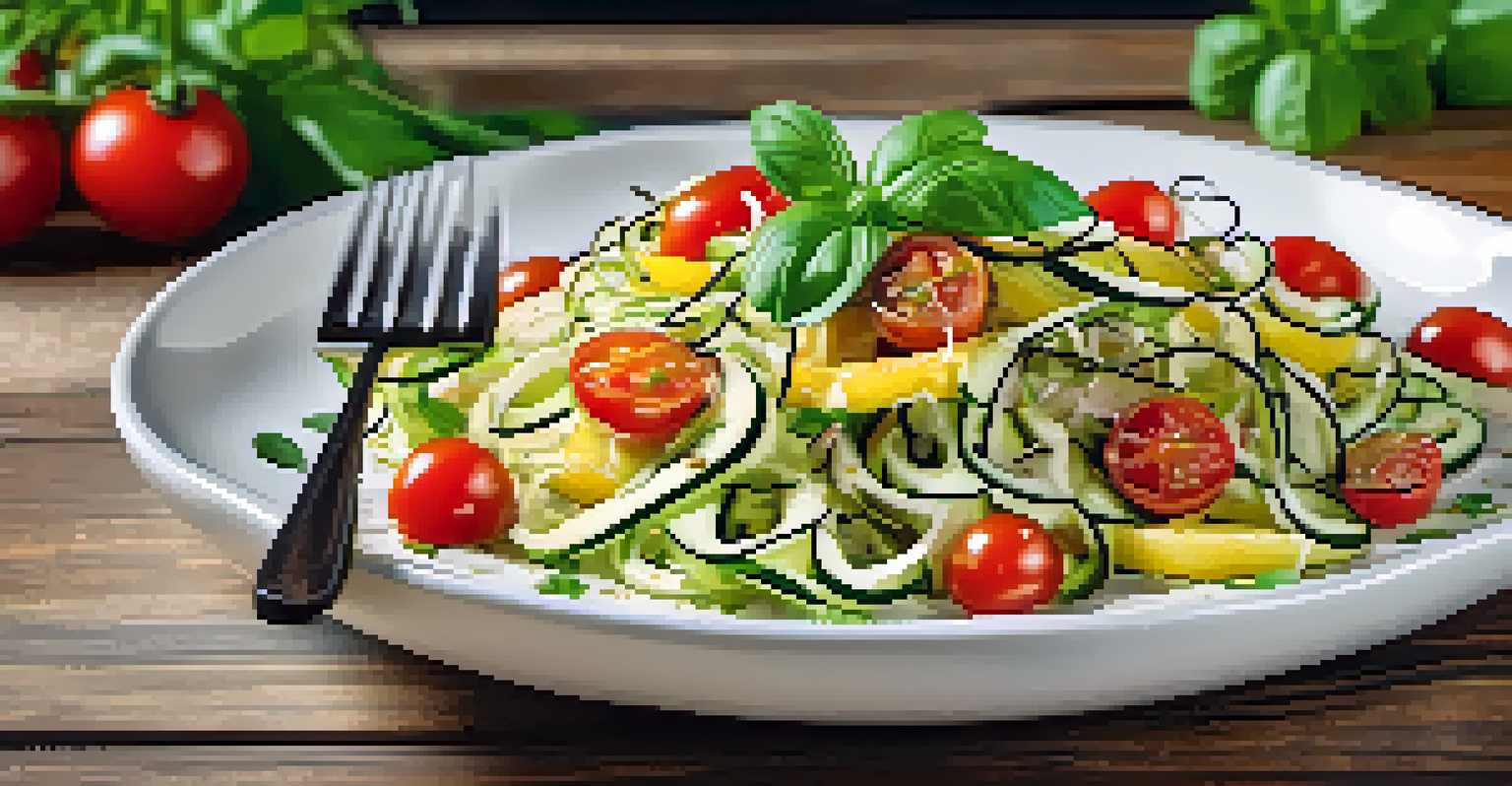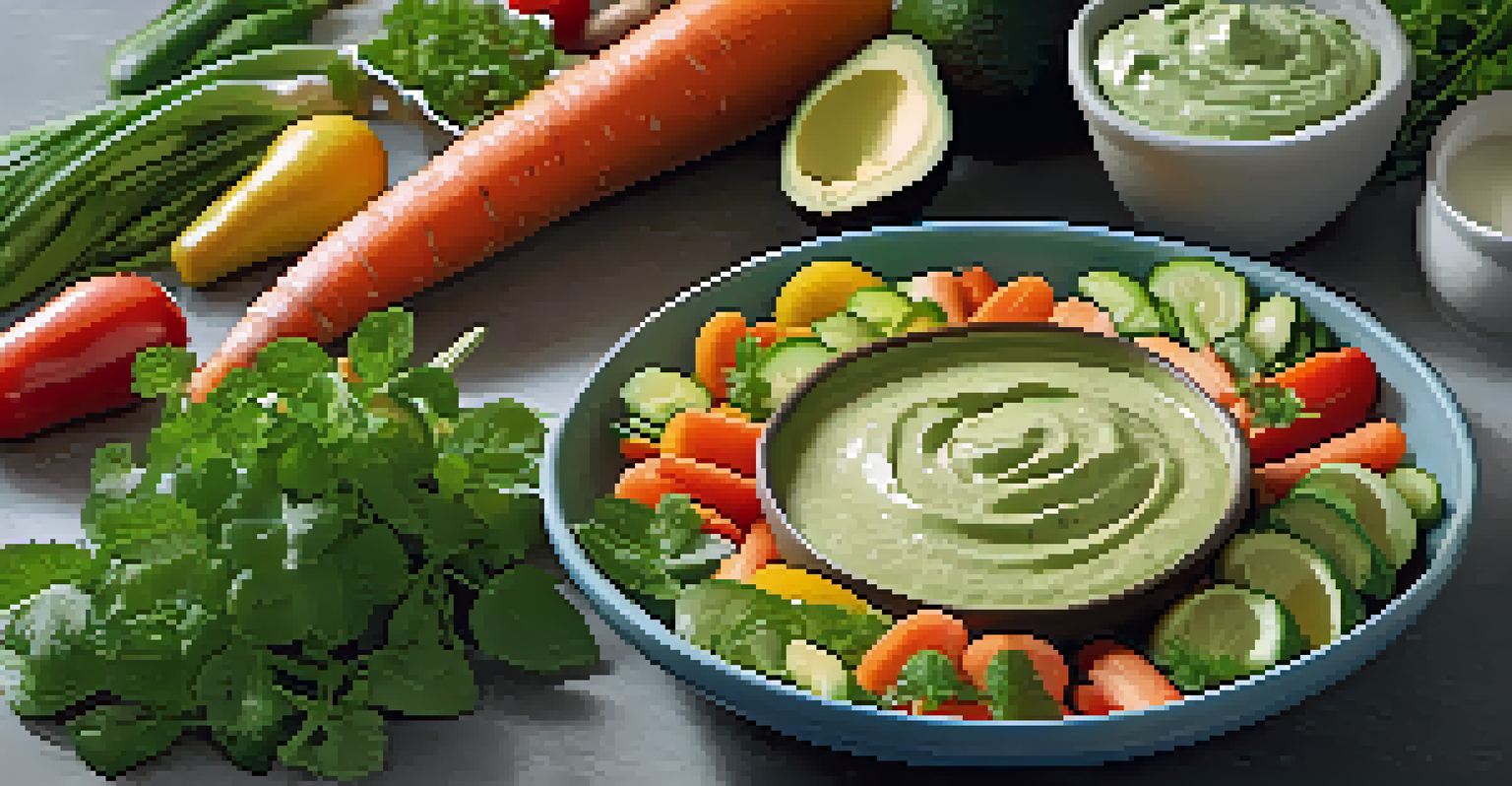Incorporating Seasonal Produce in Raw Food Meal Planning

Understanding the Benefits of Seasonal Produce
Seasonal produce is not just fresher; it’s often more flavorful and nutritious. Fruits and vegetables picked at their peak ripeness tend to have higher levels of vitamins and minerals. Plus, when you eat seasonally, you're supporting local farmers and reducing your carbon footprint.
Eat food, not much, mostly plants.
Eating with the seasons also encourages variety in your diet, which is essential for obtaining a range of nutrients. For instance, summer brings an abundance of tomatoes and peppers, while fall yields hearty squash and apples. This diversity can keep your meals exciting and your palate engaged.
Lastly, planning meals around seasonal produce can also be more cost-effective. When items are in season, they’re typically less expensive due to increased availability. This can allow you to experiment with new recipes without breaking the bank.
Choosing the Right Produce for Raw Meals
When planning raw meals, it’s vital to select fresh, high-quality ingredients. Look for local farmers' markets or grocery stores that prioritize seasonal offerings. For example, in spring, consider adding asparagus and strawberries, while winter might inspire you to incorporate root vegetables like carrots and beets.

Another tip is to think about the textures and flavors of the fruits and vegetables you choose. Crunchy veggies like bell peppers can add a satisfying bite, while softer fruits like avocados can provide creaminess. Mixing different textures can enhance your meal experience.
Seasonal Produce Boosts Nutrition
Eating seasonal fruits and vegetables provides higher levels of vitamins and minerals, enhancing your overall health.
Don’t forget about herbs and greens! Fresh herbs like basil in summer or rosemary in winter can elevate your dishes. Adding leafy greens such as kale or spinach can also boost the nutritional profile of your raw meals, making them more filling and nutritious.
Planning Your Weekly Raw Meals with Seasonal Produce
Creating a meal plan around seasonal produce can simplify your shopping and cooking. Start by making a list of seasonal fruits and vegetables that appeal to you. Once you have your list, you can brainstorm recipes that highlight those ingredients, making the most of their flavors and textures.
The best way to predict the future is to create it.
Consider dedicating a day each week to prep your ingredients. Washing, chopping, and storing fruits and vegetables in easy-to-reach containers can save time during busy week nights. For instance, prepped cucumbers and carrots can be perfect for snacking or adding to salads.
Lastly, don’t be afraid to get creative! Use seasonal produce to invent new dishes or adapt traditional recipes to your raw meal plan. A classic caprese salad can turn into a delightful raw dish by using fresh tomatoes, basil, and a drizzle of olive oil.
Storing Seasonal Produce for Maximum Freshness
Proper storage is essential for keeping seasonal produce fresh and flavorful. Different fruits and vegetables have unique storage needs; for example, tomatoes should be kept at room temperature, while leafy greens thrive in the fridge. Understanding these needs can help you reduce waste and enjoy your produce longer.
Investing in breathable storage bags or containers can also help maintain freshness. For instance, wrapping herbs in a damp paper towel and placing them in a plastic bag can prolong their life. Additionally, keeping fruits and vegetables separate can prevent ethylene gas from causing spoilage.
Planning Makes Raw Meals Easier
Creating a meal plan around seasonal produce simplifies shopping and cooking, ensuring you make the most of fresh ingredients.
Regularly check your produce for ripeness and use items that are nearing their end first. This way, you can enjoy everything at its best and avoid waste. A quick stir-fry or smoothie can be a fantastic way to use up items that need attention.
Incorporating Nuts and Seeds with Seasonal Produce
Nuts and seeds can add a satisfying crunch and essential nutrients to your raw meals. Pairing seasonal produce with nuts like almonds or walnuts can enhance the flavor and provide healthy fats. For instance, a fresh salad topped with sunflower seeds can offer a delightful texture and added protein.
Try toasting nuts and seeds lightly for extra flavor, but remember to keep them raw if you're following a strict raw food diet. Adding these ingredients can also help balance the overall nutritional profile of your meals, making them more filling and energizing.
Experiment with different combinations of nuts, seeds, and seasonal produce. A sweet summer fruit salad can benefit from a sprinkle of chia seeds, while a savory autumn dish can be elevated by adding pumpkin seeds. The possibilities are endless!
Creating Flavorful Dressings for Raw Meals
A great dressing can transform a simple raw dish into something extraordinary. Using seasonal ingredients in your dressings not only enhances flavor but also adds nutritional value. For example, blending fresh herbs like cilantro or basil with olive oil and lemon can create a zesty dressing perfect for drizzling over salads.
Consider using avocados as a base for creamy dressings. They not only provide a luxurious texture but also healthy fats that can help you feel satisfied. Pairing avocado with lime juice and garlic can create a delicious dip or dressing that complements a variety of dishes.
Creative Dressings Elevate Flavors
Using seasonal ingredients in dressings can transform simple raw dishes into flavorful and nutritious meals.
Don’t shy away from experimenting with different flavor profiles. Incorporating citrus juices, vinegars, or even a hint of honey can create complex flavors that elevate your meals. The key is to taste and adjust until you find the perfect balance that complements your seasonal ingredients.
Exploring Raw Food Recipes Featuring Seasonal Produce
Now that you understand the benefits of seasonal produce, it’s time to explore some raw food recipes! Start with a simple spiralized zucchini salad topped with cherry tomatoes and a light vinaigrette. This dish is refreshing and showcases the flavors of summer.
You can also create delicious raw desserts using seasonal fruits. A no-bake blueberry cheesecake made with cashews and fresh blueberries can be a delightful treat that satisfies your sweet tooth while still being healthy. These recipes can inspire creativity and enjoyment in your raw meal planning.

Don't forget to share your raw food creations with friends and family! Hosting a raw food potluck can be a fun way to showcase seasonal produce and inspire others to incorporate more raw meals into their diets. It’s all about enjoying delicious food together while celebrating the bounty of the season.